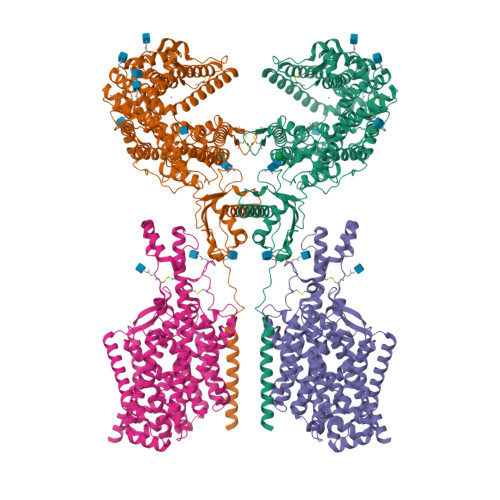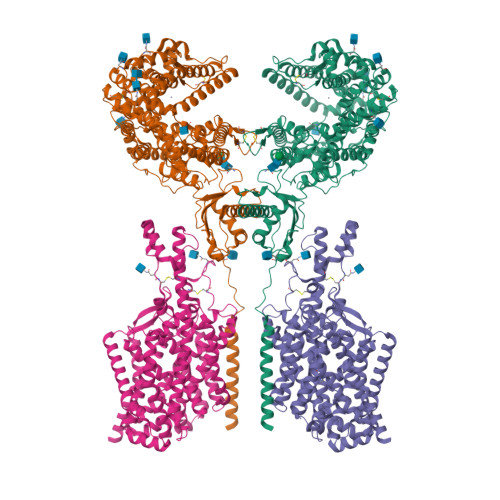Structure and function of the SIT1 proline transporter in complex with the COVID-19 receptor ACE2.
Li, H.Z., Pike, A.C.W., Lotsaris, I., Chi, G., Hansen, J.S., Lee, S.C., Rodstrom, K.E.J., Bushell, S.R., Speedman, D., Evans, A., Wang, D., He, D., Shrestha, L., Nasrallah, C., Burgess-Brown, N.A., Vandenberg, R.J., Dafforn, T.R., Carpenter, E.P., Sauer, D.B.(2024) Nat Commun 15: 5503-5503
- PubMed: 38951531
- DOI: https://doi.org/10.1038/s41467-024-48921-x
- Primary Citation of Related Structures:
8P2W, 8P2X, 8P2Y, 8P2Z, 8P30, 8P31 - PubMed Abstract:
Proline is widely known as the only proteogenic amino acid with a secondary amine. In addition to its crucial role in protein structure, the secondary amino acid modulates neurotransmission and regulates the kinetics of signaling proteins. To understand the structural basis of proline import, we solved the structure of the proline transporter SIT1 in complex with the COVID-19 viral receptor ACE2 by cryo-electron microscopy. The structure of pipecolate-bound SIT1 reveals the specific sequence requirements for proline transport in the SLC6 family and how this protein excludes amino acids with extended side chains. By comparing apo and substrate-bound SIT1 states, we also identify the structural changes that link substrate release and opening of the cytoplasmic gate and provide an explanation for how a missense mutation in the transporter causes iminoglycinuria.
Organizational Affiliation:
Centre for Medicines Discovery, Nuffield Department of Medicine, University of Oxford, Oxford, UK.























